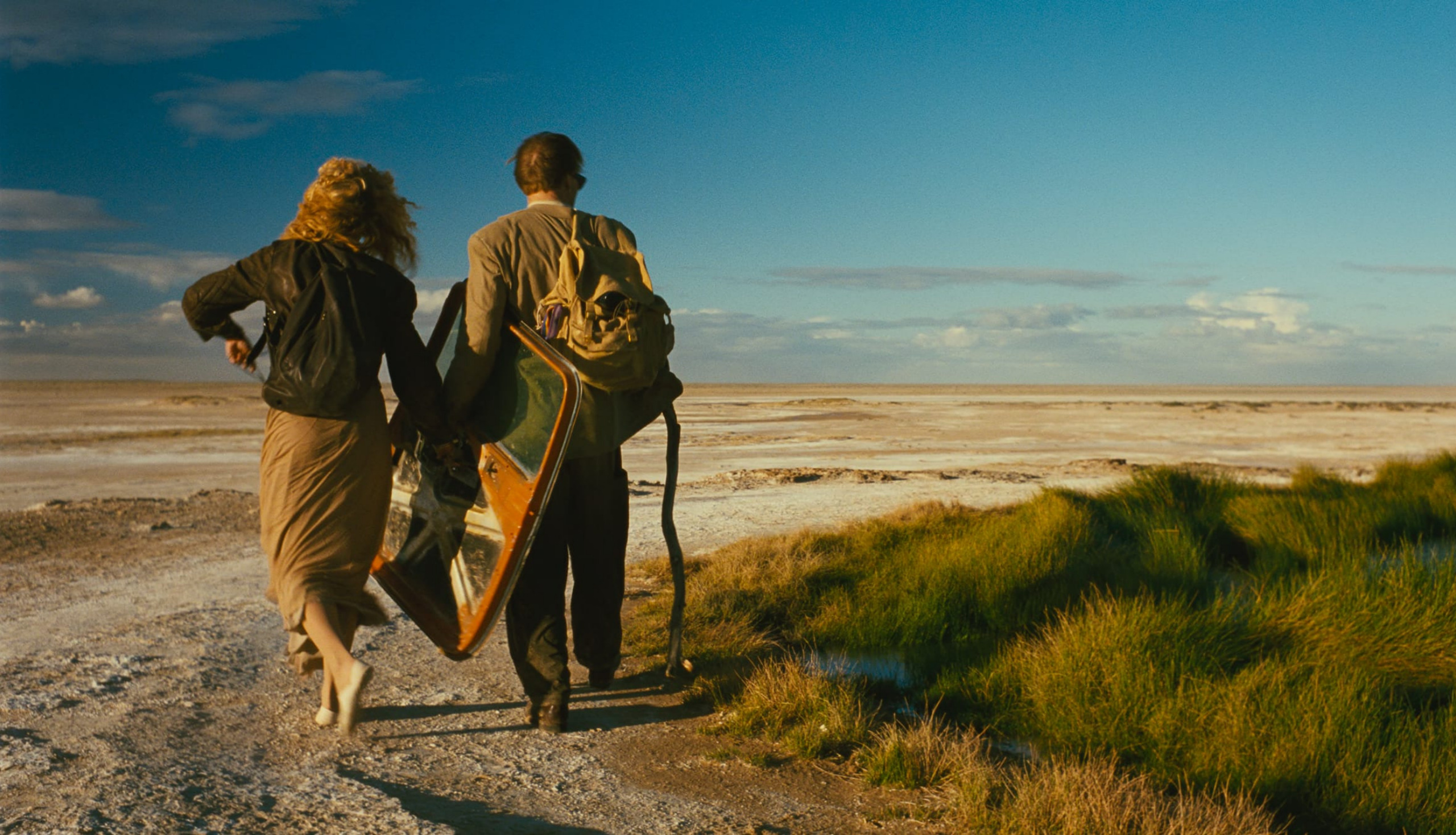RELATED ARTICLE
Wim Wenders: “Between Me and the World”
The Sound of Yesterday’s Future: Notes on the Until the End of the World Soundtrack
The Criterion Collection

Wim Wenders has often referred to his Until the End of the World (1991)
as the “ultimate road movie,” and even he may not realize how accurate
that description has turned out to be. It certainly was, and remains,
the director’s most expansive and ambitious effort in the genre that had
defined so much of his career, and it would be the last road movie he
would make for many years. A box-office disaster upon its initial
release, in a version that was truncated at 158 minutes, Until the End
of the World quickly gained acceptance as a film maudit, one of those
wounded works that still contain trace elements of their thwarted
brilliance. The full 287-minute director’s cut, on the other hand, is a
flat-out masterpiece.
As Wenders himself tells it, he was contractually obligated to deliver a
finished work of two and a half hours but realized during editing that
this would be nearly impossible. He asked his producing partners to let
him release a longer film, in two parts. When they rejected that idea,
the director decided to do what he has said was the “smartest thing I
ever did in my life”: he secretly preserved both his longer work print
and his Super 35 mm camera negative, and paid to create a duplicate
positive from which he could strike what he now calls the Reader’s
Digest theatrical version.
Director’s cuts had not yet become commonplace in the early
nineties, but Wenders had the foresight to believe that he’d one day get
the opportunity to release a longer edit. Years later, he did exactly
that, having honed his work print down to the nearly five-hour magnum
opus that he began personally screening at museums and one-off events as
early as 1993. It was released theatrically in 2015, bringing to a
close a quest that had taken the director nearly four decades.
Wenders had gotten the idea for Until the End of the World in 1977 or
1978, after an impromptu visit to Australia turned into a months-long
stay in the country. “I was so taken by the Aboriginal culture and by
the idea of dreamlines and songlines that I started to write a
science-fiction film about the end of the world, where the images of the
world were saved, in a remote place in the Australian desert,” he would
recall. He later fused that concept with another one, a retelling of
The Odyssey in which Penelope, frustrated by waiting for Odysseus, sets
off to find him. Along the way, Wenders collaborated with his muse and
star Solveig Dommartin, the author Peter Carey, and the filmmaker
Michael Almereyda on the ever-changing story and script. One can sense
these artists’ influence—Almereyda’s genre-fluid experimentation, say,
or the feminine perspective of Dommartin, whose voice and presence lend
to the film a playful tenderness missing from much of Wenders’ previous
output—in the finished product, as well as that of literary works like
Bruce Chatwin’s book The Songlines, about Aboriginal song culture and
its connections to dreams and the land, and Paul Auster’s dystopian,
existential missing-person mystery-romance In the Country of Last
Things.
“Wenders was imagining a future at a time when the present already felt strange and new, like a wonderful dream.”

“The film is not just about the relationships between its characters but about the artist’s relationship to the future, and to the planet.”

